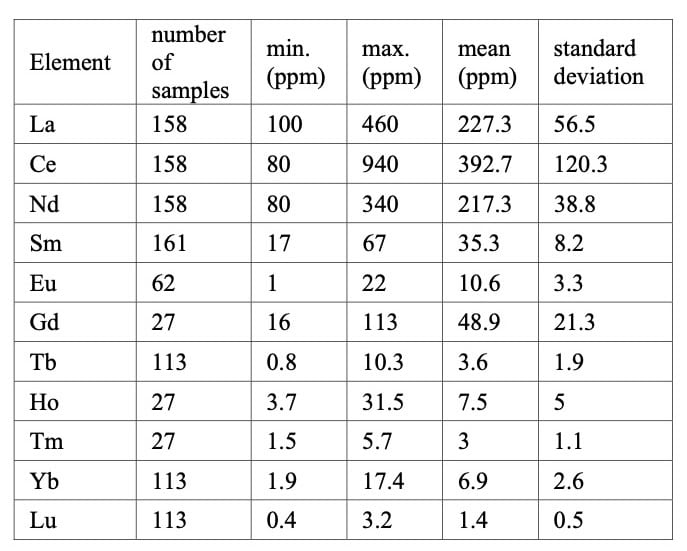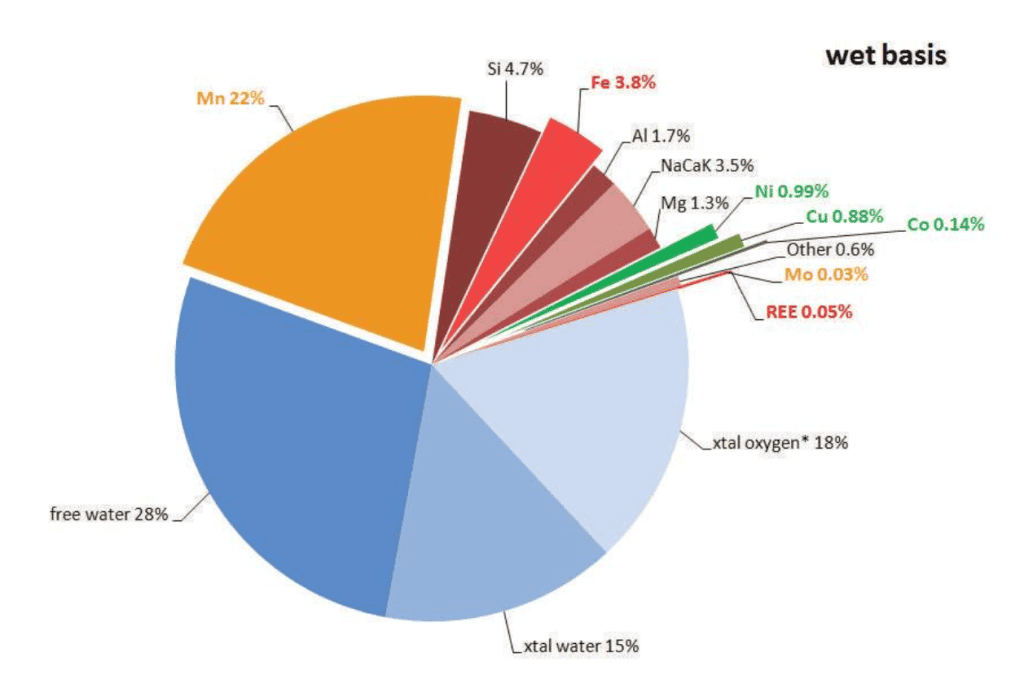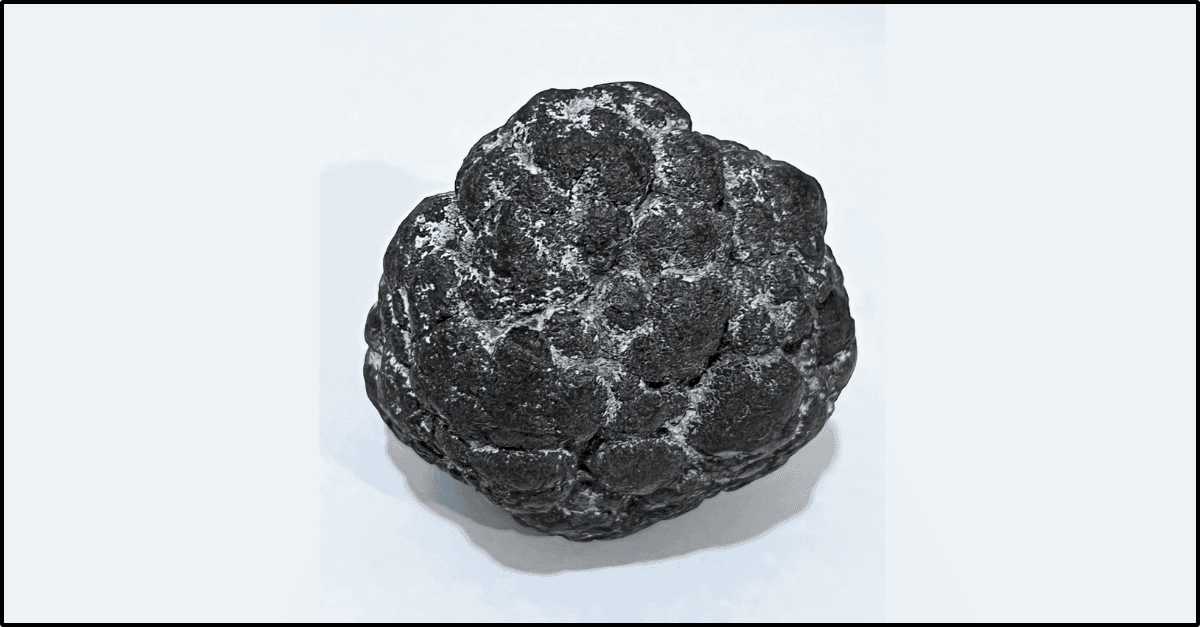Thousands of meters below the surface, scattered across the deep ocean floor, lie vast fields of small, dark rocks called polymetallic nodules. About the size of a potato, these nodules may not look remarkable, but they contain something extraordinary: the mineral resources needed to build a sustainable, electrified future.
Each nodule contains a mix of manganese, nickel, copper, cobalt, and rare earth minerals — the same elements used in batteries, electric motors, infrastructure, defense, and renewable energy systems. With demand for these materials surging, polymetallic nodules are emerging as one of the world’s most intriguing and essential resources.
These nodules typically occur around 4,000–6,000 meters (13,000 to 20,000 feet) below the surface, resting on top of the deep seabed in several parts of the world’s oceans. Together, these regions represent one of the planet’s most significant potential sources of critical minerals.
How Do Polymetallic Nodules Form?
A small solid particle—like a shark tooth, shell fragment, volcanic ash grain, or piece of rock—acts as a nucleus. Around this nucleus, metal oxides start to accumulate. Over millions of years, thin layers of manganese (Mn) and iron (Fe) oxides precipitate from seawater or pore water in sediments, coating the nucleus and giving nodules a concentric layered structure. The growth depends on redox (oxidation-reduction) conditions. These oxides act as scavengers, trapping other metals, such as nickel (Ni), copper (Cu), cobalt (Co), and rare earth elements (REE). Growth rates are incredibly slow — typically 1–10 millimeters per million years. That means a nodule the size of a potato could take 10–20 million years to form.
Unlike ore deposits on land, these nodules aren’t buried or locked in hard rock. They sit loose on the seabed, making them accessible for collection rather than traditional mining — an important distinction for how we think about obtaining them responsibly.
The Elements Inside
The critical minerals found in polymetallic nodules — nickel, manganese, cobalt, copper and REE — form the foundation of modern electrification technologies. Polymetallic nodules are rich in the elements that make these technologies possible:
Manganese (Mn)
Found abundantly in polymetallic nodules, manganese strengthens steel and contributes to battery stability and safety. It’s increasingly essential for next-generation lithium-ion chemistries like LMFP and LMR.
Nickel (Ni)
Around 70% of nickel is used in stainless steel to provide strength, corrosion resistance, and shine. Nickel also enables higher battery energy density and a longer range in electric vehicles. Nodules contain significant nickel-bearing minerals — an essential resource for the energy transition. Today, around 70% of nickel is mined from rainforests in Indonesia.
Cobalt (Co)
50-70% of Cobalt is used to stabilize battery chemistry, improving safety and longevity. 15-20% of the material is used to make superalloys that can withstand extreme heat and stress, used in many infrastructure and defense applications. Most cobalt today comes from the Democratic Republic of the Congo (DRC) in Africa and is often mined with human rights violations. Nodules offer a more ethical and geographically diverse potential source.
Copper (Cu)
Copper is one of the most important industrial metals — valued for its excellent electrical and thermal conductivity, malleability, and corrosion resistance. It’s been used for thousands of years and remains essential for modern technology, energy, and infrastructure. About 60% of copper is used for electrical applications. It’s essential for renewable energy infrastructure, including wind turbines, solar panels, and electrical wiring and power systems including AI data centers. Copper is also found in electronics such as computer chips and smartphones, plumbing, and components used in both conventional and electric vehicles.
Rare Earth Elements (REE)
The interest in rare earth elements has grown rapidly in recent years, as they’re now recognized as among the most strategically significant materials found in polymetallic nodules. These metals power the magnets, electronics, and advanced technologies that drive everything from electric vehicles and wind turbines to smartphones and defense systems. Although REEs are relatively abundant in Earth’s crust, economically mineable deposits are scarce, and global supply is heavily concentrated in China, which dominates both production and refining. This growing awareness of their critical role—combined with concerns over supply concentration—has underscored the need for diversified and sustainable sources, making the REE content of polymetallic nodules an increasingly important focus for future resource security.

Table 1. REE distribution in PNs in area investigated by IOM (Rare Earth Elements in the Polymetallic Nodules – a New Challenge Conference Paper · June 2012 by Peter Baláž and Jozef Franzen)
Higher Yields, Smaller Footprint
One of the most striking advantages of polymetallic nodules is their high concentration of valuable minerals. A single nodule can contain over 20% manganese, along with nickel (~2.5%), copper (~2%), and cobalt (~0.35%) — all in one naturally formed mineral source.
In comparison, most land-based ores contain only a fraction of these concentrations, and usually only one of these metals per deposit. That means nodules could supply the same amount of critical minerals with far less material moved — and without clearing forests, stripping away soils, or excavating layers of rock to reach the ore beneath.
This combination of richness and co-location makes polymetallic nodules one of the most efficient known sources of battery and alloy minerals on Earth.

Source: Figure 7.50 from TOML Clarion-Clipperton Zone Project, Pacific Ocean — NI 43-101 Technical Report, AMC Consultants Pty Ltd., 2016.
Looking Ahead
Polymetallic nodules can play a significant role in powering the clean-energy transition. By developing new technology that collects them responsibly, we can unlock the critical minerals — manganese, nickel, cobalt, and copper — that form the building blocks of a sustainable future.
At Impossible Metals, we believe innovation and preservation can coexist. Our mission is to demonstrate that with the right technology and intent, humanity can responsibly collect resources from the ocean floor.
The future of critical minerals doesn’t have to come at the planet’s expense. Eureka can hover above the seabed — and help power a cleaner, brighter world.
